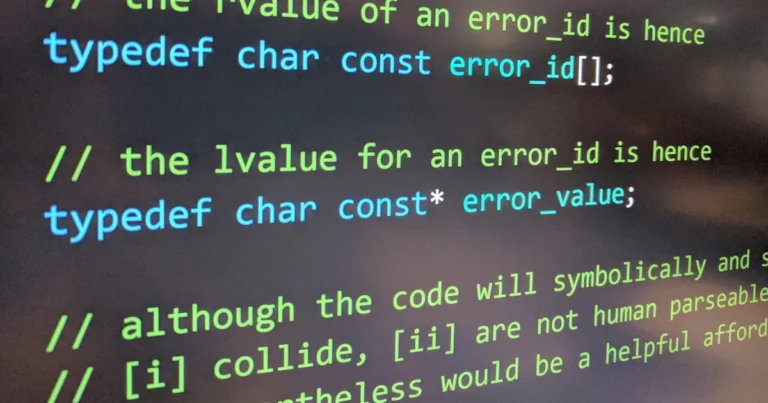Support our educational content for free when you purchase through links on our site. Learn more
What is an Optional Parameter in TypeScript? Discover 7 Essential Insights! 🚀
Have you ever found yourself tangled in a web of function calls, wondering how to make your code more flexible and user-friendly? If so, you’re not alone! Many developers face this challenge, especially when working with TypeScript. Optional parameters might just be the secret sauce you need to simplify your functions and enhance your code’s readability. In this article, we’ll dive deep into the world of optional parameters in TypeScript, exploring their definition, benefits, common pitfalls, and best practices.
Imagine you’re building a game where players can customize their characters. You want to allow them to choose a name and an optional catchphrase. With optional parameters, you can create a function that accommodates both scenarios effortlessly! Curious about how to implement this? Stick around as we unravel the mysteries of optional parameters and share practical examples that you can apply in your projects today!
Key Takeaways
- Optional parameters in TypeScript allow you to create flexible functions that can be called with varying numbers of arguments.
- They are defined using the “?” symbol, enhancing type safety while maintaining code readability.
- Best practices include using default values and checking for
undefinedto avoid common pitfalls. - Real-world applications range from API calls to logging functions, showcasing their versatility.
- Avoid placing required parameters after optional ones to maintain clarity in function signatures.
Ready to elevate your TypeScript skills? Check out our recommended resources on TypeScript tools and start coding like a pro!
Table of Contents
- Quick Tips and Facts about Optional Parameters in TypeScript
- Understanding Optional Parameters: A Deep Dive
- How to Define Optional Parameters in TypeScript
- The Benefits of Using Optional Parameters in Your Code
- Common Mistakes When Using Optional Parameters
- Best Practices for Implementing Optional Parameters
- Real-World Examples of Optional Parameters in TypeScript
- FAQs about TypeScript Optional Parameters
- What Kind of Experience Do You Want to Share?
- Conclusion
- Recommended Links
- FAQ
- Reference Links
Quick Tips and Facts about Optional Parameters in TypeScript
What are Optional Parameters in TypeScript? 🤔
Optional parameters in TypeScript allow you to make parameters optional in function definitions using the “?” symbol. This lets you call the function without providing all the parameters.
Key Facts:
- Optional parameters are denoted using the “?” symbol after the parameter name.
- They can have default values.
- Required parameters must precede optional parameters in the function signature.
- Optional parameters enhance function flexibility while maintaining type safety.
Example:
function greet(name: string, message?: string) {
console.log(`${message || "Hello"}, ${name}`);
}
greet("John"); // Output: Hello, John
greet("Jane", "Hi"); // Output: Hi, Jane
Understanding Optional Parameters: A Deep Dive
Definition and Syntax
Optional parameters in TypeScript are defined using the “?” symbol after the parameter name. The syntax is as follows:
function f(x?: Type) {
// ...
}
Here, f is the function name, x is the parameter name, and Type is the data type of the parameter.
Benefits of Using Optional Parameters
Optional parameters provide several benefits, including:
- Flexibility: Allows functions to be called with different numbers of arguments.
- Type Safety: TypeScript still ensures type checking and will throw errors if the provided arguments do not match the function’s type signature.
Example 1: Optional Parameters in Functions
function add(num1: number, num2?: number): void {
if (num2 !== undefined) {
console.log(num1 + num2);
} else {
console.log(num1);
}
}
add(5); // Output: 5
add(5, 4); // Output: 9
Example 2: Optional Parameters in Callbacks
interface Callback {
(result: string, error?: string): void;
}
function fun(callback: Callback) {
setTimeout(() => {
const success = Math.random() < 0.5;
if (success) {
callback('Operation succeeded');
} else {
callback('undefined', 'Operation failed');
}
}, 1000);
}
function handler(result: string, error?: string) {
if (error) {
console.error('Error:', error);
} else {
console.log('Success:', result);
}
}
fun(handler); // Output: Success: Operation succeeded or Error: Operation failed
How to Define Optional Parameters in TypeScript
To define optional parameters in TypeScript, you can use the “?” symbol after the parameter name. Here’s an example:
function greet(name: string, message?: string) {
console.log(`${message || "Hello"}, ${name}`);
}
greet("John"); // Output: Hello, John
greet("Jane", "Hi"); // Output: Hi, Jane
The Benefits of Using Optional Parameters
Optional parameters provide several benefits, including:
- Flexibility: Allows functions to be called with different numbers of arguments.
- Type Safety: TypeScript still ensures type checking and will throw errors if the provided arguments do not match the function’s type signature.
Common Mistakes When Using Optional Parameters
Here are some common mistakes to avoid when using optional parameters:
- Not specifying default values: If you don’t specify a default value for an optional parameter, it will be
undefinedif not provided. - Not checking for
undefined: If you don’t check forundefinedwhen using optional parameters, you may get unexpected behavior.
Best Practices for Implementing Optional Parameters
Here are some best practices for implementing optional parameters:
- Use default values: Specify default values for optional parameters to avoid
undefinedvalues. - Check for
undefined: Always check forundefinedwhen using optional parameters to ensure correct behavior.
Real-World Examples of Optional Parameters in TypeScript
Here are some real-world examples of optional parameters in TypeScript:
- Logging functions: You can use optional parameters to specify log levels or log messages.
- API calls: You can use optional parameters to specify API endpoints or query parameters.
FAQs about TypeScript Optional Parameters
Here are some frequently asked questions about TypeScript optional parameters:
- What is an optional parameter in TypeScript? An optional parameter in TypeScript is a function parameter that can be omitted during function calls.
- How do I define an optional parameter in TypeScript? You can define an optional parameter in TypeScript using the “?” symbol after the parameter name.
What Kind of Experience Do You Want to Share?
Have you used optional parameters in your TypeScript projects? Share your experiences and tips in the comments below! 💬
Conclusion

In summary, optional parameters in TypeScript are a powerful feature that enhances the flexibility and robustness of your code. By allowing parameters to be omitted, you can create functions that adapt to various scenarios without compromising type safety. The key benefits include:
- Flexibility: Functions can be called with varying numbers of arguments.
- Type Safety: TypeScript checks for parameter types, ensuring that your code remains reliable.
However, it’s essential to use optional parameters judiciously. Common pitfalls include neglecting to check for undefined values and failing to provide default values when necessary. By following best practices, such as always checking for undefined and using default values, you can harness the full potential of optional parameters without introducing bugs.
So, whether you’re building a complex application or just dabbling in TypeScript, optional parameters can significantly streamline your code. We highly recommend incorporating them into your projects! 🎉
Recommended Links
👉 Shop TypeScript Resources:
Check out these platforms for TypeScript tools:
- Visual Studio Code: Official Website
- TypeScript Official Website: TypeScript
FAQ
What is an optional parameter?
An optional parameter is a parameter in a function that can be omitted when the function is called. In TypeScript, this is denoted by placing a “?” after the parameter name. For example:
function greet(name: string, message?: string) {
console.log(`${message || "Hello"}, ${name}`);
}
In this example, the message parameter is optional, allowing you to call greet("John") without providing a message.
How do you define optional in TypeScript?
To define an optional parameter in TypeScript, you simply add a “?” after the parameter name in the function signature. For instance:
function example(param1: number, param2?: string) {
// ...
}
Here, param2 is optional, meaning it can be omitted when calling example.
Read more about “10 Reasons Why TypeScript is the Future of JavaScript Development 💻”
What is an optional parameter in JavaScript?
In JavaScript, optional parameters can be simulated using default parameters or by checking if an argument is undefined. However, JavaScript does not have a built-in syntax for optional parameters like TypeScript. For example:
function greet(name, message) {
message = message || "Hello";
console.log(`${message}, ${name}`);
}
In this case, if message is not provided, it defaults to “Hello”.
Read more about “Unlocking JavaScript’s Hidden Power: Mastering Optional Parameters ⚡️”
Why are optional parameters bad?
While optional parameters can enhance flexibility, they can also lead to confusion if overused. Some potential downsides include:
- Ambiguity: It may not be clear which parameters are optional, leading to misinterpretation of function usage.
- Complexity: Functions with many optional parameters can become difficult to read and maintain.
- Error-Prone: If not handled correctly, optional parameters can introduce bugs, especially if
undefinedvalues are not checked.
Can you have required parameters after optional parameters?
No, in TypeScript, required parameters must always precede optional parameters in a function signature. This ensures that the function’s signature remains clear and predictable.
How do optional parameters affect function type definitions?
In function type definitions, optional parameters are indicated with a “?” after the parameter name. This informs TypeScript that the parameter may or may not be provided, allowing for more flexible function calls.







